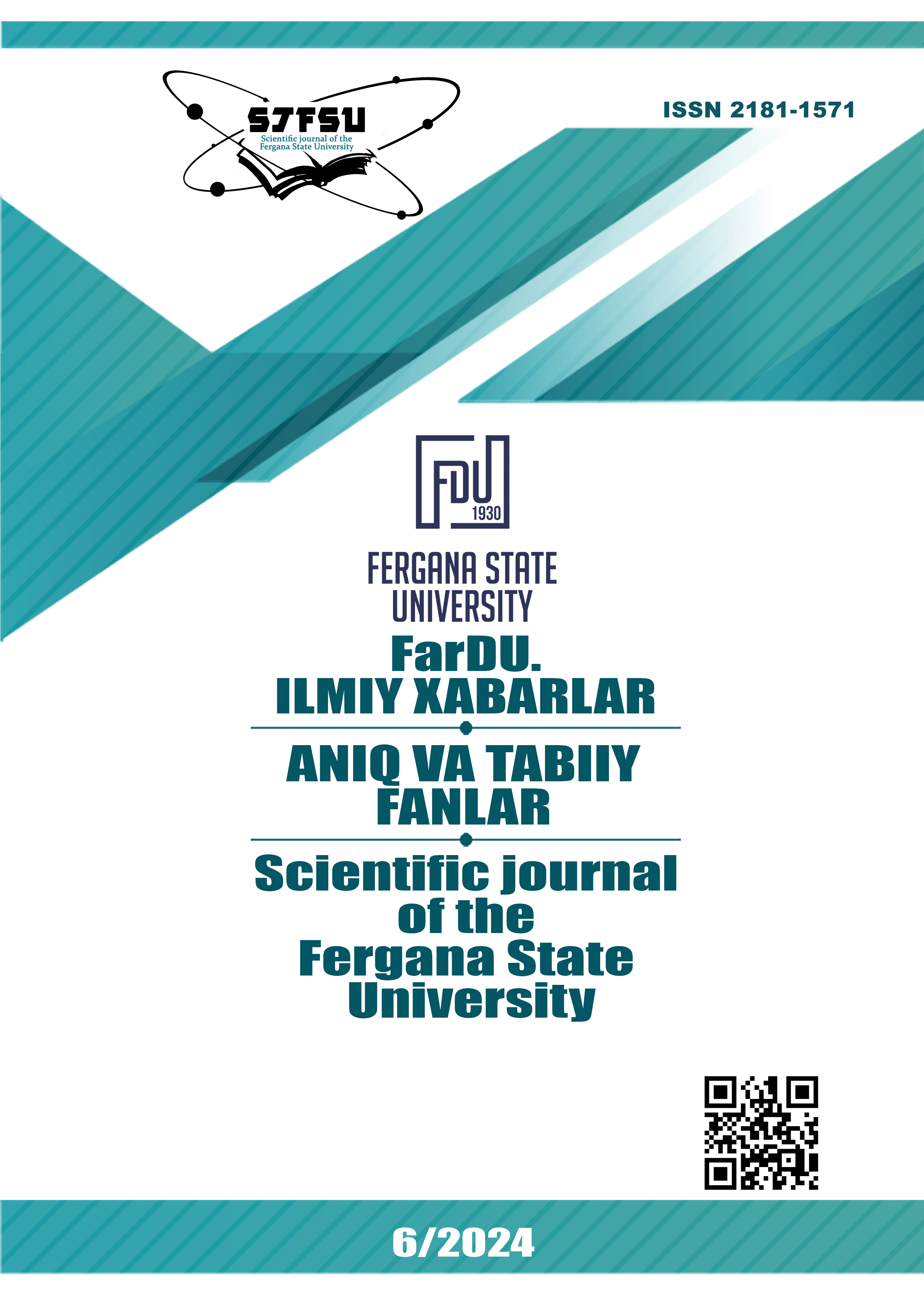OIL CONTENT OF THE SEEDS OF PRUNUS PERSICA var. NECTARINA
Keywords:
nectarine, oil, lipid, fatty acids, triglyceride, column chromatography, thin-layer chromatography, extraction, glycolipid, phospholipid.Abstract
The oil content, fatty acids, neutral lipids, glycolipids, and phospholipids composition of the seeds of Prunus persica var. nectarina growing in Uzbekistan has been determined and analyzed. The neutral lipid (NL), glycolipid (GL), and phospholipid (FL) fractions of the oil extracted from two different types of nectarines were isolated. The three obtained fractions were hydrolyzed, and the fatty acids were converted into methyl esters for analysis using chromatographic mass spectrometry. The amount of saturated fatty acids in the neutral lipids was found to be 8.45-8.87%, while the amount of unsaturated fatty acids was 91.13-91.55%. According to the analysis results, 15 saturated and unsaturated fatty acids were identified in the studied nectarine samples. The amounts of oleic and linolenic acids were found to be 68.84-69.05% and 21.71-21.98%, respectively. Among the saturated fatty acids, palmitic acid was present in the highest quantity. Nectarine oil is recommended for the preparation of enriched vegetable oils and various food supplements.
References
Шоферистов Е.П., Цюпка С.Ю., Иващенко Ю.А. Коллекционный фонд нектарина селекции никитского ботанического сада // Селекція і насінництво.– 2013.– №104. – С. 26-31.
Minar M., Hassanein M. Studies on non-traditional oils: I. Detailed studies on different lipid profiles of some Rosaceae kernel oils // Grasas y Aceites.– 1999. – V.50. №5. – P. 379-384.
Kamel B.S., Kakuda Y. Characterization of the seed oil and meal from apricot, cherry, nectarine, peach and plum // JAOCS – 1992. – V69. №5. – P. 492-494.
Кароматов И.Дж., Набиева З.Т. Лечебные свойства персиков // Электронный научный журнал «Биология и интегративная медицина». – 2017. – №2 – C. 156-163.
Lazos E.S. Composition and oil characteristics of apricot, peach and cherry kernel // Grasas Y Aceites. – 1991. – V.42. №2. – P. 127-131.
Matthäus B., Özcan M.M. Fatty acids and tocopherol contents of some Prunus spp. kernel oils // Journal of Food Lipids. – 2009. – V.16(2). – P. 187-199.
Кикалишвили Б.Ю., Зурабашвили Д.З., Турабелидзе Д.Г., Шанидзе Л.А., Николайшвили М.Н. Высшие жирные кислоты персикового масла и их биологическая активность // GeorGian Medical news. – 2013. – №5.(218) – C. 82.
Chamli D., Bootello M.A., Bouali I., Jouhri S., Boukhchina S., Martinez-Force E.,//Chemical characterization and thermal properties of kernel oils from Tunisian peach and nectarine varieties of Prunus persica. // Grasasy Aceites.– 2017. – V.68(3). – P. 1-9.
Ashraf C.M., Iqbal S., Ahmed D. Nutritional and physicochemical studies on fruit pulp, seed and shell of indigenous Prunus persica // Journal of Medicinal Plants Research – 2011. – V.5(16). – P. 3917–3921.
Ульченко Н.Т., Беккер Н.П., Юнусов А., Юлдашева Н.К., Черененко Т.В., Глушенкова А.И. Липиды и липофильные компоненты семян некоторых плодовых растений // Химия природных соединений. – 2009. – №3. – C. 269-271.
Downloads
Published
Issue
Section
License
Copyright (c) 2025 Scientific journal of the Fergana State University

This work is licensed under a Creative Commons Attribution-NonCommercial-NoDerivatives 4.0 International License.
Most read articles by the same author(s)
- , , THE METHOD AND UNITS OF CONCEPTUAL ANALYSIS , Scientific journal of the Fergana State University: No. 2 (2024): Scientific journal of the Fergana State University (Social humanities sciences)
- Ra’no Urazova, ATTRIBUTES OF MITRA IN THE AGE OF AVESTO , Scientific journal of the Fergana State University: No. 1 (2023): Scientific journal of the Fergana State University (Exact and natural sciences)
- , , PHRASEOLOGICAL TRANSFORMANTS AND THEIR MODELLING IN UZBEK LANGUAGE , Scientific journal of the Fergana State University: No. 4 (2023): FarDU ilmiy habarlari jurnali (Ijtimoiy gumanitar)
- Ra’no Sayfullaeva, Nafisa Gʻaybullayeva, LINGUISTIC INTERPRETATION OF THE CONCEPT OF HEALTH , Scientific journal of the Fergana State University: No. 1 (2023): Scientific journal of the Fergana State University (Exact and natural sciences)
- , ATTRIBUTES OF MITRA IN THE AGE OF AVESTA , Scientific journal of the Fergana State University: No. 2 (2023): Scientific journal of the Fergana State University (Social humanities sciences)
- , MINERAL AND AMINO ACID COMPOSITION OF PLANT PRUNUS PERSICA var. NECTARINA , Scientific journal of the Fergana State University: No. 6 (2023): FarDU.Ilmiy xabarlar jurnali (Aniq va tabiiy fanlar)

